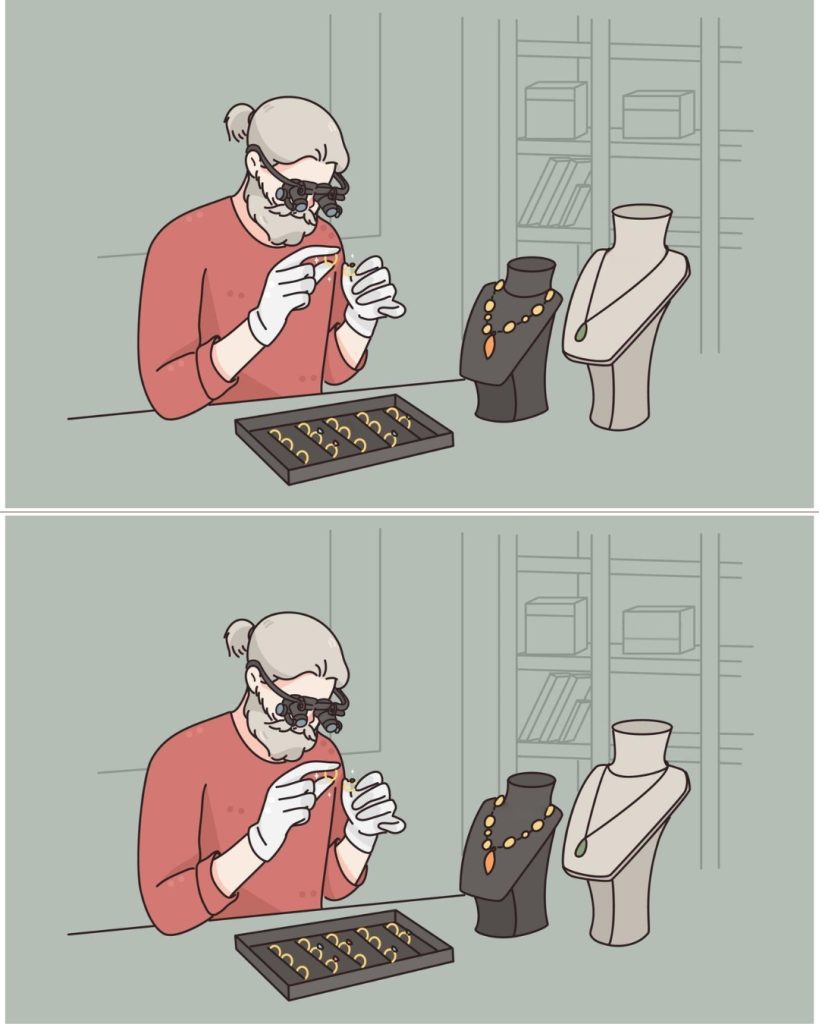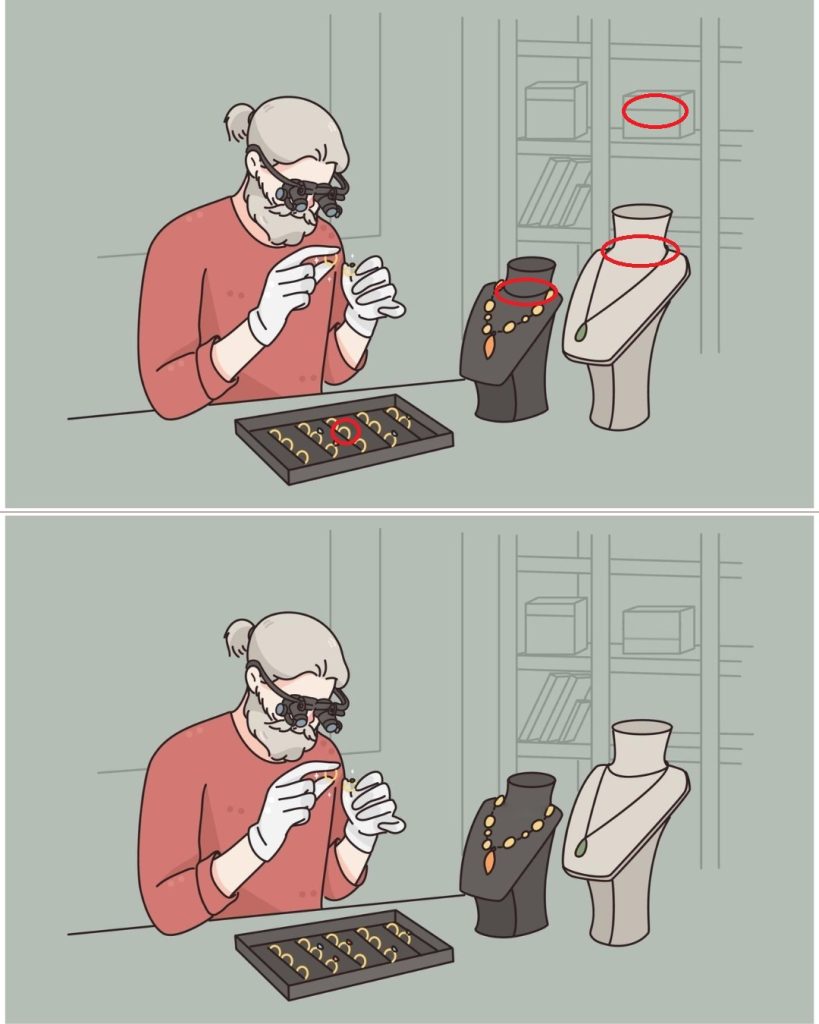In the world of visual puzzles, few challenges are as engaging and satisfying as the classic “Spot the Difference” game. It demands more than just a glance—it requires careful attention to subtle variations, often hidden in plain sight. Today’s puzzle takes us into a quiet workshop where a focused jeweler is inspecting his creations, but not everything is as identical as it seems.

Scene Description
Both images depict the same cozy setting: an elderly jeweler with neatly tied-back hair is intently examining a piece of jewelry using a magnifying tool. He’s wearing white gloves and a red sweater, fully absorbed in his work. In front of him is a tray filled with gold rings and two necklace stands—one black, one beige—displaying elegant necklaces. Behind him sits a bookshelf filled with boxes and books.
At first glance, the two illustrations look exactly alike. But a closer inspection reveals multiple subtle differences that set the two scenes apart.
Video: Find The Difference
Puzzle Analysis
Let’s break down the differences based on careful observation:
1. Extra Detail on the Beige Necklace Stand
- Top Image: There’s a small red curve (possibly part of a decorative element or ribbon) near the top of the beige necklace stand.
- Bottom Image: This detail is missing entirely—the necklace stand looks clean and uninterrupted.
- ✅ This is a deliberate addition to test attention to detail in the accessories.
2. Odd Bead on the Black Necklace
- Top Image: The necklace on the black stand includes a large, red-colored bead that stands out from the rest.
- Bottom Image: This red bead is absent; the necklace has a uniform design.
- ✅ A clever difference in jewelry design that can easily be overlooked.
3. Item on the Bookshelf
- Top Image: A rectangular white box is visible on the upper right shelf behind the jeweler.
- Bottom Image: That same box is not there—the shelf is empty in that spot.
- ✅ A classic trick in spot-the-difference puzzles: background manipulation.
4. Red Gem in the Ring Tray
- Top Image: One of the rings in the tray contains a bright red gemstone, clearly standing out.
- Bottom Image: The red gem is gone, making all rings look identical.
- ✅ A subtle but effective change in the smallest elements of the scene.
Video: Only 1% Can Spot All the Differences! 🎯Test Your Eyes & Brain! 🧠⚡
Final Answers Recap
Here are the four confirmed differences between the two images:
- Red curve on the beige necklace stand (top image only)
- Red bead on the black necklace (top image only)
- White rectangular box on the shelf (top image only)
- Red gem in the ring tray (top image only)

Conclusion
This puzzle showcases how tiny, easily missed details can completely transform a scene when compared closely. Whether it’s a gem, a bead, a shelf item, or a trim on a display, each change challenges our brain to slow down and see beyond the obvious.
If you were able to spot all four differences—congratulations! You’ve demonstrated impressive visual acuity and a sharp eye for detail. And if you didn’t catch them all the first time, don’t worry—these puzzles are designed to be tricky, and each attempt strengthens your ability to observe with precision.
Stay curious, keep observing, and challenge your mind daily with puzzles like this!